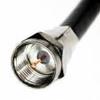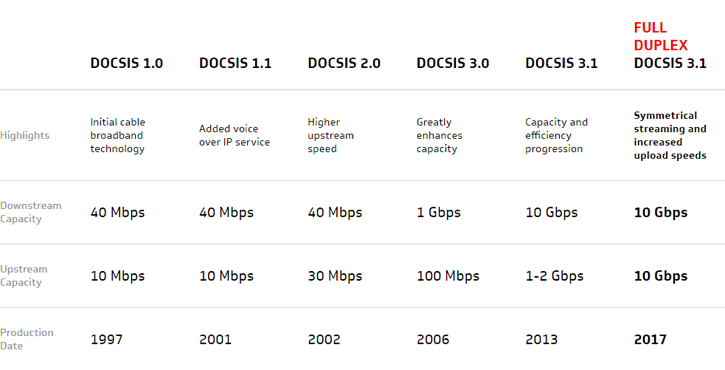Not everybody has access to fiber, so this is some pretty terrific news from the cable-modem front. The guys behind the DOCSIS standard has completed DOCSIS 3.1 Duplex specification. And it brings a theoretical 10 Gbps download link with uploads up-to 1 Gbps.
In the very near future you may expect cable operators to adopt the latest DOCSIS 3.1 standard, which can, in theory, deliver peak network speeds of 10Gbps download and 1Gbps upload (end-users probably won’t get this top speed though). However for a long time the holy grail of HFC networks has been to achieve a Full Duplex transmission via DOCSIS 3.1 (i.e. 10Gbps for both upload and download), which enables upstream and downstream traffic to efficiently use the same spectrum at the same time. A lot of work has gone into designing this and now the first specification has finally been completed.
As the colleagues of TPU spotted, CableLabs, the leading innovation lab for the secure delivery of high speed data, video, voice and next generation services, today completed its Full Duplex DOCSIS® 3.1 specification which significantly increases upstream capacity and enables symmetric multi-Gigabit services over existing hybrid fiber-coaxial (HFC) technology. Anticipating a change in user demand as emerging technologies require more bandwidth, CableLabs’ Full Duplex DOCSIS technology will ensure that cable operators can be ready to meet future usage needs for technologies such as virtual and augmented reality.
xFull Duplex DOCSIS 3.1 technology builds on the successful completion of CableLabs’ DOCSIS 3.1 specification, which made deployments of 10 Gbps downstream and 1 Gbps upstream broadband possible.
“In the United States, more than 90 percent of households are connected to an HFC network, and consumers typically have higher download speeds than upload speeds,” said Phil McKinney, president and chief executive officer of CableLabs. “By enabling Full Duplex DOCSIS, the upstream and downstream traffic can flow at up to 10 Gigabits concurrently, doubling the efficiency of spectrum use.”
In current DOCSIS networks, the spectrum is typically split between the upstream and downstream, or spectrum is shared between upstream and downstream traffic. Full duplex communication enables upstream and downstream traffic to efficiently use the same spectrum simultaneously, which can be beneficial for residential and business services. For businesses, in particular, symmetric services can vastly improve network efficiency, which can, in turn, improve the customer experience on business websites. By leveraging the combination of DOCSIS 3.1 technology, passive HFC network characteristics, self-interference cancellation technology and intelligent scheduling, CableLabs – along with the collaboration of its members and other industry partners – developed this solution enabling full duplex communications over the existing HFC network. The evolution also eliminates the need and cost of deploying fiber to the home while still maintaining backward compatibility with previous generations of DOCSIS technology.
The Full Duplex DOCSIS 3.1 specification effort was initially announced by CableLabs in February 2016. The update to DOCSIS 3.1 including the complete Full Duplex DOCSIS specification will be published on the CableLabs website later this month.
10 Gbps Down and 1 Gbps Upstream Compatibility Coming to Cable Modems


